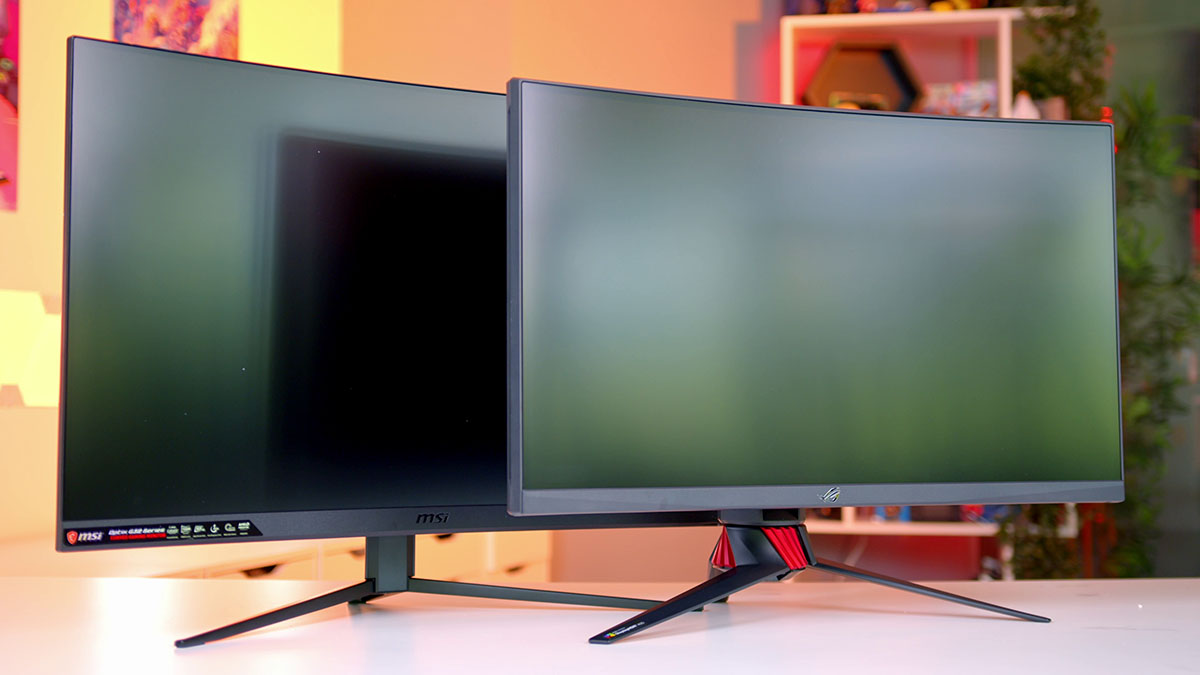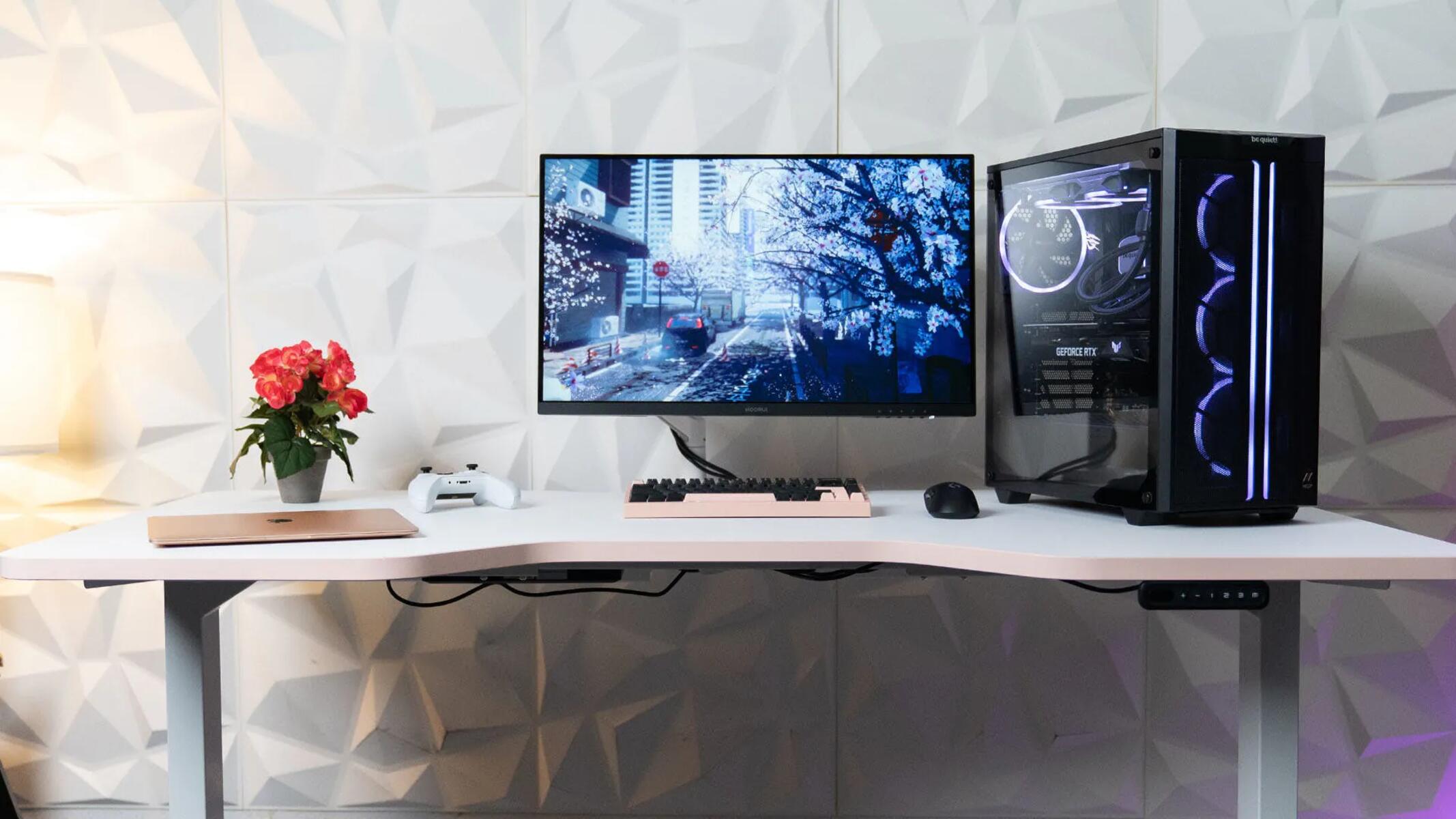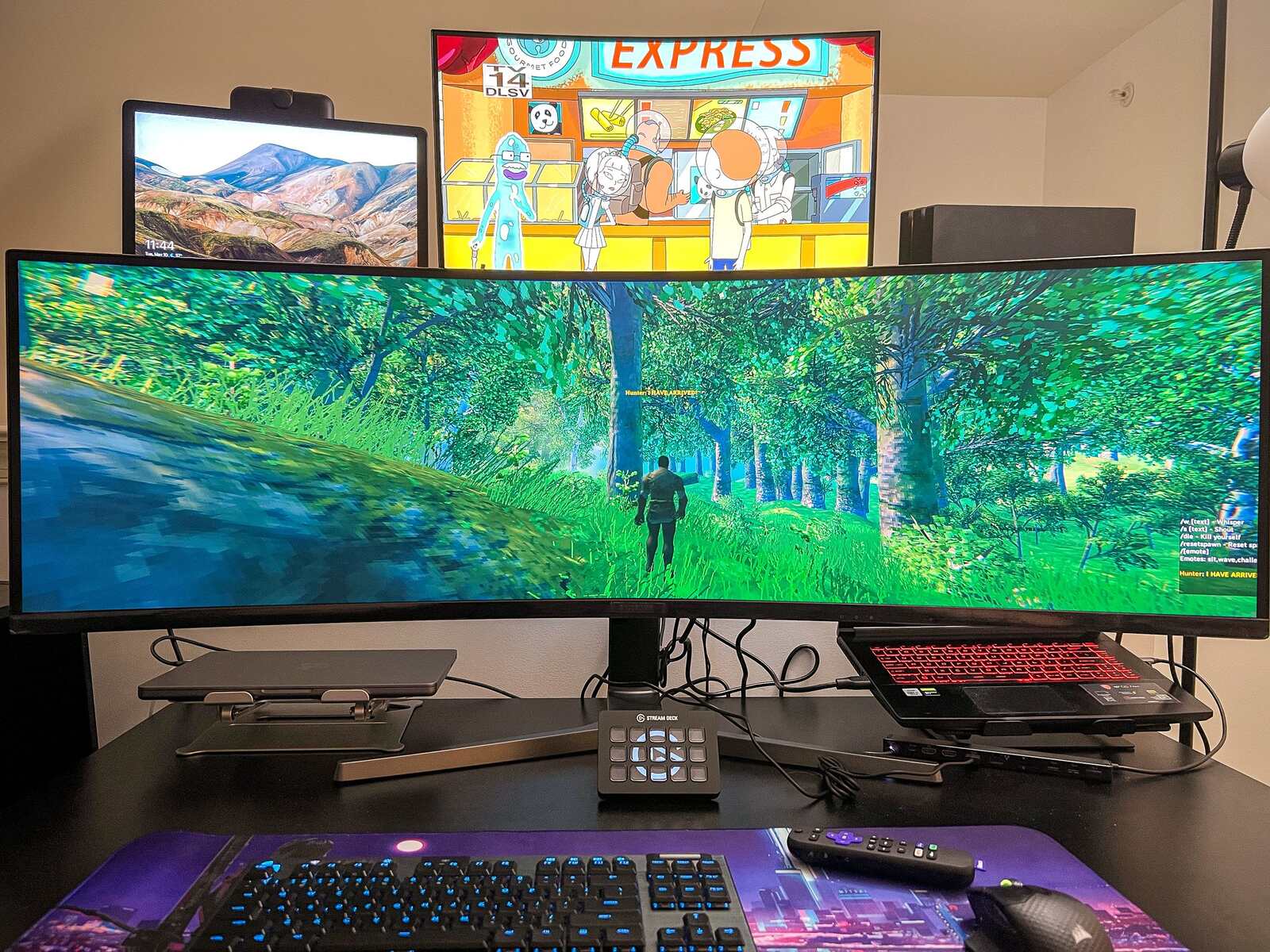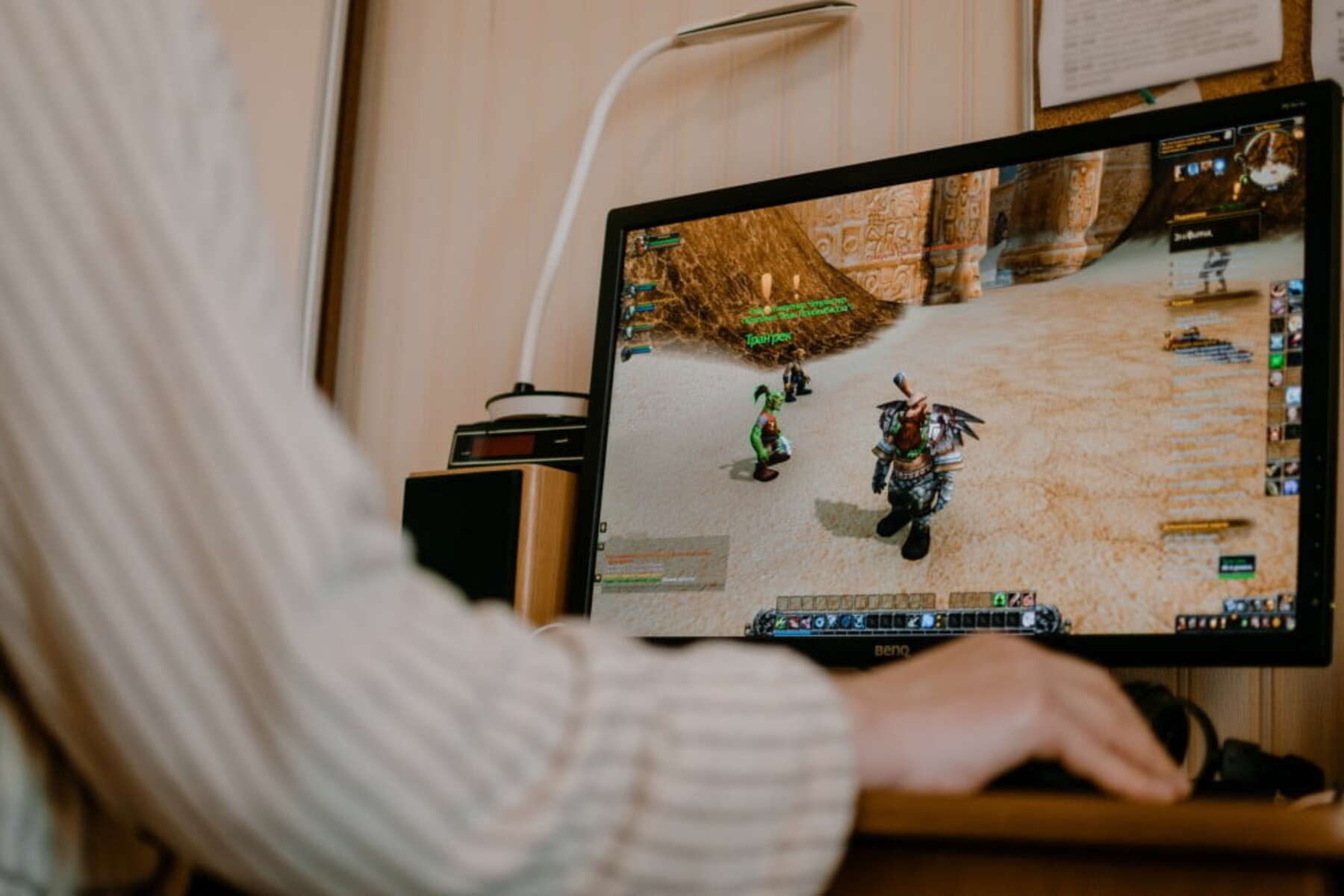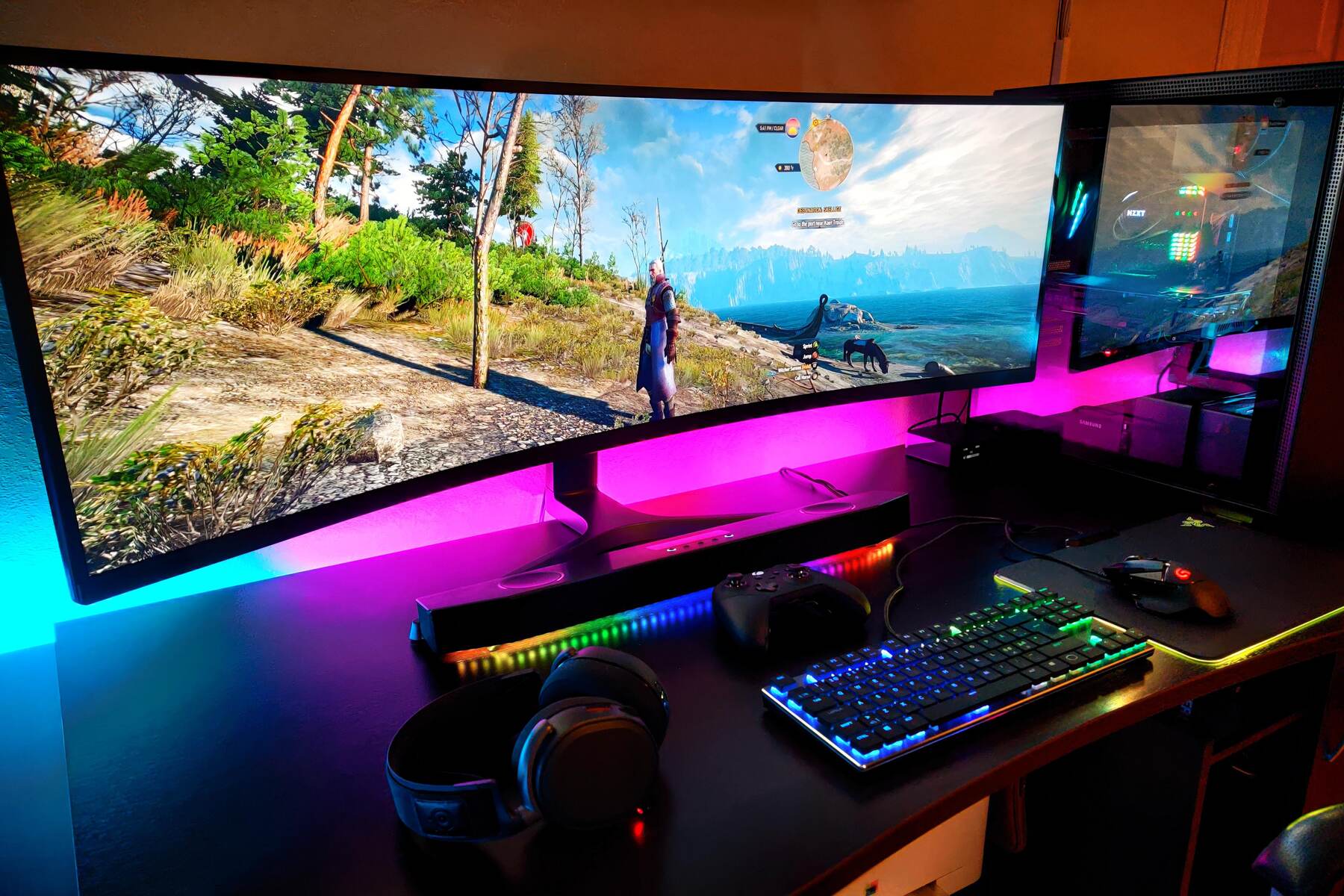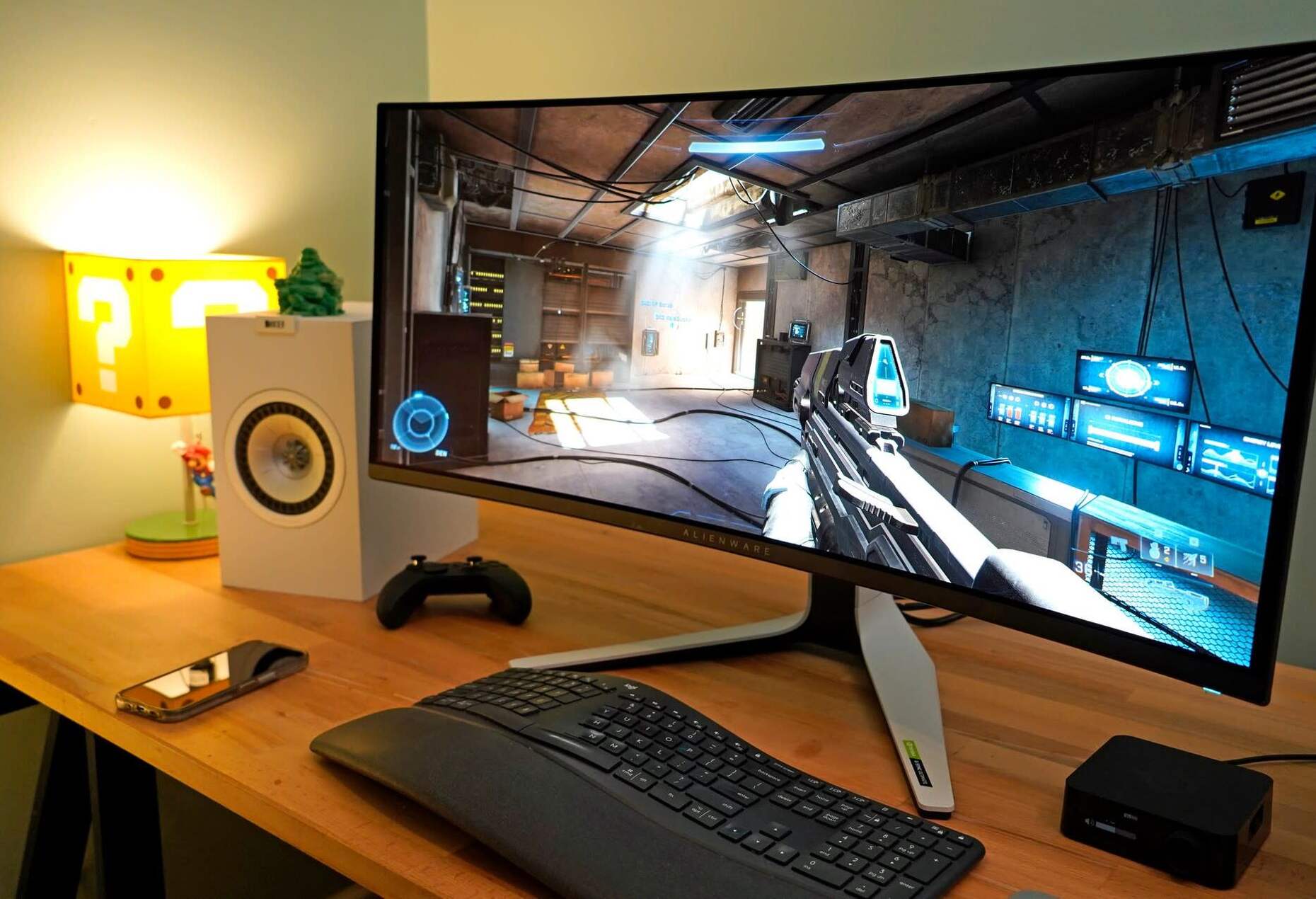Introduction
When it comes to gaming, having the right monitor can significantly enhance your gaming experience. A gaming monitor with the right features can provide you with smoother gameplay, sharper visuals, and improved responsiveness. However, with so many options available in the market, choosing the perfect gaming monitor can be a daunting task.
In this guide, we will walk you through the key factors to consider when selecting a gaming monitor. From screen size and resolution to refresh rate and response time, we will explore the different aspects that can make a notable difference in your gaming sessions. By the end of this article, you will have a better understanding of the factors that matter most when it comes to choosing a gaming monitor.
Screen Size and Resolution:
One of the first decisions you’ll need to make is the screen size and resolution of your gaming monitor. A larger screen size can offer a more immersive gaming experience, while a higher resolution can provide sharper images and more detailed graphics. However, it’s important to find the right balance between size and resolution, as a higher resolution on a smaller screen may result in smaller menus and text, causing eye strain.
Panel Technology:
The panel technology used in a gaming monitor can greatly affect its performance. There are three main types of panels: Twisted Nematic (TN), In-Plane Switching (IPS), and Vertical Alignment (VA). TN panels are known for their fast response times and high refresh rates, making them ideal for competitive gaming. However, they may lack in color accuracy and viewing angles compared to IPS and VA panels, which provide better color reproduction and wider viewing angles.
Screen Size and Resolution
When it comes to gaming monitors, screen size and resolution are two key factors that directly impact your gaming experience. Finding the right combination of these factors can greatly enhance the immersion and visual quality of your games.
Screen size refers to the diagonal measurement of the display, typically measured in inches. The ideal screen size for gaming largely depends on personal preference and available desk space. A larger screen can provide a more immersive experience, making you feel more engaged in the game world. On the other hand, a smaller screen is often more practical for those with limited space or who prefer to sit closer to the monitor.
Resolution, on the other hand, refers to the number of pixels on the screen. A higher resolution means more pixels, which translates into sharper and more detailed images. The most common resolutions for gaming monitors include Full HD (1920×1080), WQHD (2560×1440), and 4K Ultra HD (3840×2160). A higher resolution is particularly beneficial for larger screens, as it helps maintain image clarity even at a closer viewing distance.
When choosing a gaming monitor, it’s important to consider the balance between screen size and resolution. A larger screen with a low resolution can result in visible pixelation, decreasing the overall visual quality. Conversely, a high-resolution monitor on a small screen may make text and user interfaces appear too small, straining your eyes and making it difficult to read.
Additionally, it’s worth noting that the resolution also affects the performance requirements of your gaming setup. Higher resolutions demand more processing power, so ensure that your graphics card can handle the chosen resolution. If you have a mid-range or entry-level gaming rig, opting for a lower resolution may be a more practical choice.
In summary, when selecting a gaming monitor, consider both the screen size and resolution to find the optimal balance for your gaming needs. A larger screen size can offer greater immersion, while a higher resolution ensures crisp and detailed visuals. By finding the right combination, you can elevate your gaming experience to new heights.
Panel Technology
Another crucial factor to consider when choosing a gaming monitor is the panel technology it utilizes. The panel technology directly impacts the display quality, color accuracy, viewing angles, and response times of the monitor.
There are three primary panel technologies used in gaming monitors: Twisted Nematic (TN), In-Plane Switching (IPS), and Vertical Alignment (VA).
Twisted Nematic (TN) panels are commonly found in budget-friendly gaming monitors. They offer excellent response times, typically as low as 1ms, which reduces motion blur and ghosting, making them ideal for competitive gaming. TN panels also have high refresh rates, providing smooth and fluid gameplay. However, they tend to have limitations in color reproduction and viewing angles. TN panels offer fast performance but compromise on visual quality.
In-Plane Switching (IPS) panels deliver superior color accuracy and wide viewing angles. This makes them popular among gamers who prioritize vibrant visuals and detailed color reproduction. IPS panels offer better image quality and more accurate color representation compared to TN panels. However, IPS panels usually have slower response times, typically around 4-5ms, which can result in more noticeable motion blur. They also tend to have lower refresh rates compared to TN panels.
Vertical Alignment (VA) panels strike a balance between the fast response times of TN panels and the color accuracy of IPS panels. VA panels offer excellent contrast ratios and deep blacks, resulting in more vibrant and immersive visuals. They have better color reproduction compared to TN panels and faster response times compared to IPS panels. However, VA panels can sometimes suffer from motion blur and may have limited viewing angles, particularly when it comes to dark scenes or fast-paced games.
When selecting the panel technology for your gaming monitor, consider your priorities. If you primarily play competitive games and value faster response times and high refresh rates, a TN panel might be the best choice. On the other hand, if you prioritize stunning visuals, accurate color reproduction, and wide viewing angles, an IPS panel may be more suitable. For those seeking a blend of performance and visual quality, a VA panel offers a compelling option.
Ultimately, the choice of panel technology depends on your individual preferences and gaming requirements. Consider your priorities and find the panel technology that best suits your needs. By selecting the right panel technology, you can ensure an optimal gaming experience with the perfect balance of performance and visual quality.
Refresh Rate
The refresh rate of a gaming monitor is a crucial factor to consider, as it directly impacts the smoothness and fluidity of the visuals displayed on the screen. The refresh rate is measured in Hertz (Hz) and indicates the number of times the monitor can refresh the image per second.
A higher refresh rate provides a smoother gaming experience, especially during fast-paced and action-packed gameplay. It reduces motion blur and makes the visuals appear more seamless and responsive. The standard refresh rate for most monitors is 60Hz, which means the screen refreshes 60 times per second. However, gaming monitors with higher refresh rates, such as 144Hz or even 240Hz, are becoming increasingly popular.
When selecting a gaming monitor, it’s essential to consider your gaming preferences and the capabilities of your gaming setup. If you are primarily into competitive gaming, where quick reflexes and response times are crucial, a higher refresh rate monitor can give you a competitive advantage. The increased refresh rate ensures that the screen updates quickly, providing you with a more accurate representation of the game’s current state.
It’s important to note that to fully take advantage of a high refresh rate, your computer needs to be able to consistently deliver a high frame rate. If your graphics card cannot consistently hold up to the refresh rate of the monitor, you might not fully experience the benefits of a higher refresh rate display.
Additionally, some gaming monitors feature variable refresh rate technologies, such as NVIDIA G-Sync or AMD FreeSync. These technologies synchronize the monitor’s refresh rate with the frame rate produced by the graphics card. This eliminates screen tearing and stuttering, resulting in a smoother and more enjoyable gaming experience.
In summary, the refresh rate of a gaming monitor plays a significant role in the smoothness and responsiveness of the visuals. A higher refresh rate provides a more immersive and enjoyable gaming experience, particularly for competitive gamers. Consider your gaming preferences and the capabilities of your gaming setup when selecting a gaming monitor and aim for a refresh rate that maximizes your gaming experience.
Response Time
The response time of a gaming monitor is a crucial specification that directly affects the clarity and smoothness of fast-moving visuals. It refers to the time it takes for a pixel to transition from one color to another and is typically measured in milliseconds (ms).
A low response time is desirable in gaming monitors as it helps reduce motion blur and ghosting, both of which can negatively impact the gaming experience. Motion blur occurs when fast-moving objects appear blurry or leave a trail behind them, making it difficult to discern details during fast-paced gameplay. Ghosting, on the other hand, happens when the afterimage of an object lingers on the screen, creating a smearing effect.
Most gaming monitors today have response times ranging from 1ms to 5ms. Lower response times, such as 1ms or 2ms, are ideal for competitive gaming, as they provide the clearest and most responsive visuals. These rapid response times ensure that fast-moving objects and actions are displayed with minimal blurring and ghosting, allowing gamers to react quickly and accurately.
However, it’s worth noting that achieving extremely low response times can come at the expense of other features, such as color accuracy or viewing angles. Some monitors that prioritize response time may sacrifice a bit of color representation or viewing angle performance. It’s important to strike a balance between response time and other factors, depending on your preferences and gaming needs.
Additionally, keep in mind that response time can vary for different transitions. Some monitors may have lower response times for gray-to-gray transitions but higher response times for other color transitions. It’s important to look for monitors that offer consistent response times across various transitions to ensure a smooth and fluid gaming experience.
Ultimately, when selecting a gaming monitor, consider your gaming preferences and the types of games you play. If you primarily play fast-paced and action-packed games, a monitor with a low response time, preferably 1ms or 2ms, would be highly beneficial. However, if you prioritize color accuracy or enjoy slower-paced games, a slightly higher response time may be acceptable.
In summary, the response time of a gaming monitor plays a vital role in delivering clear and smooth visuals during gameplay. A low response time helps reduce motion blur and ghosting, enhancing the overall gaming experience. Consider your gaming preferences and strike a balance between response time and other factors to find the perfect gaming monitor for your needs.
Input Lag
Input lag is a critical factor to consider when choosing a gaming monitor, especially for competitive gamers who require precise and responsive controls. It refers to the delay between when a user inputs a command, such as pressing a button or moving a mouse, and when that action is displayed on the screen. A low input lag ensures that your actions are registered and displayed in real-time, providing a more immersive and accurate gaming experience.
Input lag can be influenced by multiple factors, including the monitor’s processing time, the response time of the panel, and the connectivity between the gaming device and the monitor. However, the processing time of the monitor itself plays the most significant role in determining input lag.
When selecting a gaming monitor, it’s crucial to find one with a low input lag, typically measured in milliseconds (ms). The lower the input lag, the more quickly your actions will be displayed on the screen, creating a more responsive and seamless gaming experience. Input lag is especially important in competitive gaming genres like first-person shooters or fighting games, where split-second reactions can make a significant difference.
It’s important to note that input lag can vary depending on the monitor’s settings and features. Some gaming monitors come with specific gaming modes or settings that can further reduce input lag. Enabling these modes can provide a slight advantage in terms of responsiveness, making it easier to react quickly in fast-paced games.
When researching a gaming monitor’s input lag, it’s essential to consider reliable sources and read reviews that specifically test and measure input lag. Keep in mind that different reviewers may use different testing methods or measurement tools, so make sure to gather information from multiple sources for a more comprehensive understanding of a monitor’s input lag performance.
In summary, input lag is a crucial consideration when choosing a gaming monitor, as it directly affects your ability to react quickly and accurately in games. Look for monitors with low input lag to ensure a more immersive and responsive gaming experience, particularly for competitive gaming. Consider reviews and reliable sources to gather information on a monitor’s input lag performance and make an informed decision.
HDR and Color Accuracy
High Dynamic Range (HDR) and color accuracy are important considerations when choosing a gaming monitor. These factors contribute to the overall visual quality and immersion of your gaming experience by delivering vibrant colors, higher contrast ratios, and more lifelike images.
HDR technology expands the color and contrast range of the monitor, allowing it to display a more extensive palette of colors and a greater differentiation between light and dark areas. This results in more vivid and realistic visuals, with brighter highlights and deeper shadows. HDR content in games is becoming increasingly popular and can truly enhance the gaming experience, immersing you in rich and detailed graphics.
When choosing a gaming monitor with HDR support, it’s essential to consider the level of HDR it offers. There are different HDR standards, including HDR10, HDR10+, and Dolby Vision, each with varying levels of color range, contrast, and brightness. Ensure that your monitor has the necessary HDR support for the content you wish to enjoy, and keep in mind that HDR content is not as widespread as standard dynamic range (SDR) content.
In addition to HDR, color accuracy is another crucial aspect to consider. A gaming monitor with accurate color reproduction ensures that the games you play are displayed as intended by the game developers. Colors should be true-to-life, well-balanced, and free from distortion. IPS panels generally offer superior color accuracy compared to TN or VA panels, making them an ideal choice for gamers who prioritize visual fidelity.
When researching a gaming monitor’s color accuracy, look for monitors that have undergone color calibration or come with color calibration options. These monitors have been fine-tuned to provide precise and accurate colors out of the box, reducing the need for manual adjustments. It’s also worth considering monitors that cover a wide color gamut, such as sRGB or Adobe RGB color spaces, as they can reproduce a broader range of colors.
Ultimately, selecting a gaming monitor with HDR support and accurate color reproduction can greatly enhance your gaming experience. HDR technology provides more vibrant and realistic visuals, while accurate color reproduction ensures that you see games as intended by the developers. Consider the level of HDR support and color accuracy when comparing and choosing a gaming monitor.
Adaptive Sync Technologies
Adaptive Sync technologies play a crucial role in reducing screen tearing and stuttering, providing a smoother and more immersive gaming experience. These technologies synchronize the monitor’s refresh rate with the frame rate produced by the graphics card, resulting in seamless and tear-free gameplay.
There are two main Adaptive Sync technologies available: NVIDIA G-Sync and AMD FreeSync. NVIDIA G-Sync is designed for use with NVIDIA graphics cards, while AMD FreeSync works with AMD graphics cards. Both technologies achieve the same goal of matching the monitor’s refresh rate to the graphics card’s output to eliminate screen tearing and stuttering.
NVIDIA G-Sync requires a dedicated hardware module installed in the monitor, which can make G-Sync monitors more expensive. However, this hardware-based approach allows for a wider range of supported refresh rates and typically provides a slightly better overall experience. G-Sync also supports variable overdrive, which adjusts the monitor’s pixel response time based on the graphics card’s output, minimizing ghosting and motion blur.
AMD FreeSync, on the other hand, is an open standard that does not require a dedicated hardware module. This makes FreeSync monitors more affordable compared to G-Sync monitors. However, FreeSync monitors have a more limited range of supported refresh rates, which can vary depending on the specific model. FreeSync does not support variable overdrive like G-Sync, meaning that the pixel response time remains constant regardless of the graphics card’s output.
In 2019, NVIDIA announced that its latest graphics cards would support FreeSync monitors, expanding the compatibility between Adaptive Sync technologies and graphics cards. This means that NVIDIA users can now take advantage of FreeSync monitors without needing a G-Sync compatible display. However, keep in mind that not all FreeSync monitors are certified as G-Sync compatible, and compatibility may vary between models.
When selecting a gaming monitor, consider your graphics card brand and whether it supports G-Sync or FreeSync. If you have an NVIDIA graphics card and want the best possible experience, a G-Sync monitor would be the ideal choice. For AMD graphics card users or those looking for a more budget-friendly option, a FreeSync monitor can still provide a smooth gaming experience without the premium price tag.
In summary, Adaptive Sync technologies, such as NVIDIA G-Sync and AMD FreeSync, are essential for eliminating screen tearing and stuttering during gameplay. Consider your graphics card brand and budget when selecting a monitor with Adaptive Sync technology. A G-Sync monitor offers a wider range of support and variable overdrive, while FreeSync monitors are more affordable but have a more limited range of supported refresh rates. Choose the Adaptive Sync technology that is compatible with your graphics card to ensure a smooth and tear-free gaming experience.
Connectivity Options
When choosing a gaming monitor, it’s important to consider the available connectivity options to ensure compatibility with your gaming setup and devices. The connectivity options determine how you can connect your monitor to your gaming PC or console, as well as any additional peripherals you may want to use.
One of the most common and essential connectivity options is HDMI (High-Definition Multimedia Interface). HDMI ports allow you to connect your gaming monitor to your gaming PC, gaming console, or other multimedia devices. HDMI cables can carry both audio and video signals, making them a versatile option. Most modern gaming monitors offer at least one HDMI port, and it’s advisable to choose a monitor with an HDMI 2.0 or higher version, as it supports higher resolutions and refresh rates.
DisplayPort is another widely used connectivity option in gaming monitors. DisplayPort ports provide high bandwidth and support higher resolutions and refresh rates than HDMI. They are commonly found in high-end gaming monitors and can deliver excellent performance when paired with a compatible graphics card or console. If you have a high-performance gaming setup, consider a monitor with a DisplayPort for maximum capability and future-proofing.
In addition to HDMI and DisplayPort, some gaming monitors may offer other connectivity options, such as DVI (Digital Visual Interface) or VGA (Video Graphics Array). These options are less common nowadays but can still be useful if you have older devices or specific connectivity requirements. It’s worth noting that DVI and VGA connections typically don’t support audio, so separate audio connections may be required.
USB ports are also worth considering in a gaming monitor. USB ports provide additional connectivity options for peripherals, such as gaming mice, keyboards, or external storage devices. Some monitors even offer USB hub functionality, allowing you to connect multiple USB devices directly to the monitor for convenience and easy access.
When researching connectivity options, it’s crucial to consider the specific requirements of your gaming setup. Check the available ports on your gaming PC or console and ensure that the monitor you choose has compatible connectivity options. Additionally, consider the number of ports available on the monitor to accommodate your desired peripherals and any future expansions.
In summary, connectivity options are an essential aspect to consider when selecting a gaming monitor. HDMI and DisplayPort are the most common and versatile options, providing high-quality audio and video signals. USB ports can also be beneficial for connecting peripherals. Evaluate your gaming setup’s required connections and choose a monitor with the appropriate connectivity options to ensure seamless compatibility.
Design and Ergonomics
While the technical specifications of a gaming monitor are crucial, it’s also important to consider the design and ergonomics of the monitor. A well-designed monitor not only enhances the aesthetics of your gaming setup but also offers convenience and comfort during prolonged gaming sessions.
One aspect to consider is the physical design of the monitor. This includes factors such as the bezel size, the overall form factor, and the placement of buttons and controls. A slim bezel design provides a more immersive viewing experience by minimizing distractions and maximizing the screen real estate. A sleek and modern look can also elevate the overall visual appeal of your gaming setup.
Ergonomics is another essential consideration. Adjustable height, tilt, and swivel features allow you to position the monitor at the most comfortable viewing angle, reducing strain on your neck and shoulders. A monitor with a pivot function enables you to switch between landscape and portrait orientations, which can be beneficial for content creation or multitasking.
Additionally, consider the VESA mount compatibility of the monitor. A VESA mount allows you to attach the monitor to a monitor arm or wall mount, offering more flexibility in terms of positioning and saving desk space. If you prefer a multi-monitor setup, ensure that the monitor has a thin bezel and VESA mount compatibility for seamless alignment.
Another aspect to consider is the on-screen display (OSD) menu and controls. A well-designed OSD menu makes it easy to navigate and adjust various monitor settings, such as brightness, contrast, and color options. Ideally, the controls should be intuitive and accessible, allowing you to make quick adjustments without interrupting your gaming sessions.
Some gaming monitors also come with additional features that can enhance the gaming experience. For example, built-in RGB lighting or customizable lighting effects can add a touch of flair to your gaming setup. Integrated speakers or headphone jacks can eliminate the need for separate audio devices. These added features can contribute to the overall convenience and enjoyment of your gaming sessions.
In summary, the design and ergonomics of a gaming monitor play a significant role in the overall user experience. Consider factors such as bezel size, adjustability, VESA mount compatibility, OSD menu design, and additional features when selecting a monitor. A well-designed and ergonomic monitor can enhance comfort, convenience, and visual appeal, allowing you to fully enjoy your gaming sessions.
Price and Budget Considerations
When it comes to choosing a gaming monitor, price and budget considerations play a significant role in the decision-making process. Setting a budget not only helps you narrow down your options but also ensures that you get the best value for your money.
Gaming monitors can vary greatly in price, depending on their specifications, features, and brand. Higher-end monitors with advanced features, such as higher resolutions, faster refresh rates, and HDR support, tend to be more expensive. On the other hand, budget-friendly monitors may offer adequate performance for casual gaming without breaking the bank.
Before setting a budget, it’s important to consider your gaming needs and expectations. Determine the resolution, screen size, refresh rate, and other features that are important to you. Understanding your gaming requirements will help you prioritize which aspects you’re willing to invest more in and which ones you can compromise on to fit your budget.
It’s also worth considering the longevity of your investment. While budget-friendly options may be tempting, remember that investing in a higher-quality monitor can provide better performance and longevity. A higher-quality monitor is likely to have better build quality, more reliable components, and longer warranty periods.
Don’t forget to take advantage of deals and discounts when shopping for a gaming monitor. Keep an eye out for seasonal sales, special promotions, and bundle offers that can help you stretch your budget further. It’s always a good idea to compare prices across different retailers to ensure you’re getting the best deal for your chosen monitor.
When establishing your budget, it’s important to be realistic and focus on the features that matter most to you. Consider your gaming preferences and evaluate the trade-offs between different specifications and features. By having a clear budget in mind, you can make a more informed decision and avoid overspending on unnecessary features.
In summary, price and budget considerations are crucial factors when choosing a gaming monitor. Determine your gaming needs and expectations, prioritize the features that matter most to you, and set a budget accordingly. Strike a balance between performance, features, and price to ensure you get the best value for your investment.
Conclusion
Choosing the perfect gaming monitor is a crucial step in enhancing your gaming experience. By considering factors such as screen size and resolution, panel technology, refresh rate, response time, input lag, HDR and color accuracy, adaptive sync technologies, connectivity options, design and ergonomics, and price and budget considerations, you can make an informed decision that aligns with your gaming preferences and requirements.
Screen size and resolution determine the immersion and visual quality of your games, with a balance between the two being essential. Panel technology impacts the display quality, color accuracy, and viewing angles, allowing you to choose between TN, IPS, and VA panels based on your priorities. A higher refresh rate provides smoother gameplay, while a low response time reduces motion blur and ghosting for more clarity. Input lag determines the responsiveness of your controls and actions, allowing for precise gameplay.
HDR and color accuracy enhance the visual fidelity of your games, while adaptive sync technologies such as G-Sync and FreeSync minimize screen tearing and stuttering. Connectivity options ensure compatibility with your gaming setup, while design and ergonomics contribute to aesthetics, comfort, and convenience. Price and budget considerations help you strike the right balance between performance and cost, ensuring that you get the best value for your investment.
Throughout the decision-making process, it’s important to consider your specific gaming preferences and requirements. Researching and reading reviews from reliable sources will deepen your understanding of each factor, enabling you to choose the gaming monitor that best suits your needs.
Remember, a gaming monitor should not only provide excellent performance but also enhance your overall gaming experience. By considering all the factors we have discussed, you can find a gaming monitor that immerses you in stunning visuals, delivers smooth gameplay, and complements your gaming setup.
So, take your time, explore the options available, and choose your gaming monitor wisely. Happy gaming!







